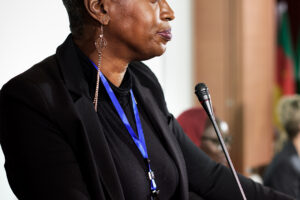A Study in Evil: The Slave Trade in Africa.
2. Domestic Slavery
Scholars do not agree as to when exactly slavery was introduced in Africa, but what is certain is that, by the ninth century, slavery had become a dominant practice in the Muslim world, the Persian Gulf, and the Indian Ocean Basin. Arab traders had been involved in the trade networks, and through contacts with North Africa and the East African coast, African slaves became an important item in the Mediterranean world and the Indian Ocean Basin trade. Slaves were mostly procured through trade or as booty in war or raids, but they also came from other sources, such as debtor pawnage, theft, or other forms of offences. While these were responses to the external demand for cheap labor, some states within Africa also made use of slave labor. A few examples of some kingdoms in Africa with varying degrees of engagement and demand for slaves for local use will suffice.
While slavery had been a marginal part of society well into the fifteenth century, it had, by the sixteenth century, transformed into a complex institution with varying impacts on societal structures (Lovejoy 1983, p. 40). This was a result of the growth of the European slave trading activities that benefitted from the infusion of vast resources that made slaves available for both export and for domestic use (Lovejoy 1983). In the Kongo, and the Gold Coast, for instance, slavery was already an important aspect of society before the arrival of the Portuguese. For instance, in the Kongo, the two principal areas of Mbanza and Mpinda, which had a large population, also boasted large slave holding stations for the nobility. With the greater presence of the Portuguese in the first decades of the sixteenth century, gun and gun powder became readily available for raids and the capture of slaves. Additionally, access to Portuguese soldiers from 1514 made it possible for the state to capture and procure more slaves, which were used for both domestic and external trade. Some of the slaves served as soldiers, while others became part of the retinue of the nobility (Lovejoy 1983), and some slave masters conducted business through their slaves, but others remained as farm hands. By the turn of the century, Cadamosto could report that the king of the Wolof sold slaves to visiting merchants. He opined that the king also “employs these slaves in cultivating the land” for the merchants and state officials under very harsh conditions. These slaves were also settled in villages where they cultivated millet, sorghum indigo, and vegetables. Slavery in the nineteenth century transformed from something dependent on a kinship-based society to something undergoing some changes.
The Portuguese, plying along the Guinea coast in the fifteenth century in search of gold resources, procured slaves to sell to Gold Coasters looking for labor in their mines. Other areas where slaves were also used in gold mining in the western Sudan included Bure and Bambuk and, towards the forest region, the Akan gold fields. Scholars have discussed the Asante struggle with states such as Denkyira for the control of the route and access to the coast (Boahen 1986). First, this was for direct access to the source of guns and gun powder, and second, this was for slaves, who initially were to work in the mines and were later to be sold to Europeans. Slavery had, by the early seventeenth century, become an important institution in the forest state of Asante, where they used slave labor in mining and panning, and some merchants along the Gold Coast also used slaves as porters.
Observers intimated that slave labor was the most common way to cart goods and to carry out all kinds of work requiring the use of labor (Lovejoy 1983, p. 41). Asante searched for slaves to satisfy the domestic use; this expanded to include providing slaves to satisfy the European demand, through which they acquired more guns and gun power to capture more slaves, thus symbolizing the gun–slave circle. In the Sokoto Caliphate, which also had great numbers of slaves by the mid nineteenth century, a typical day in a slave’s life is detailed in Mary F. Smith’s Baba of Karo: A Woman of Muslim Hausa (Smith 1954). Mary Smith gives a vivid picture of a typical day in a slave’s life. Slaves wake up and begin work at 9:30 a.m. stopping by the time of Asr, the late afternoon prayer, after which they spend time on their individual plots. They spent most of the day working for their master and had to also find time to cultivate their own little plots from which to feed themselves and their children. Women were especially used for their productive and reproductive capacities. In addition to working on the farm, women also fetched water, pounded fufu, washed clothes, and kept the compound clean. Women also worked with men on the fields and in craft production and porterage or petty trading. The differences between this form of slavery and Arab and European forms of slavery rest upon the uses to which slaves were put and the methods of acquisition. In Africa, some slaves rose to positions of responsibility in their societies. There are the classic cases of the women slaves at the royal palace in Dahomey, those in the Amazons, and the female soldiers of Dahomey (Lovejoy 1983, p. 115). Male slaves bore the brunt of agricultural work in Western and Central Africa, but it is also true that women also worked on the field and in the compounds, helping to cook and take care of children, and they sometimes served as concubines for their master and their male children (Klein 1983). There were also the peanut farms in Senegambia and the palm oil production in the Gold Coast and Cameroon.
Many scholars such as Walter Rodney and, recently, Boubacar Barry, following thewritings of R. S. Rattray, a British colonial Anthropologist in Ghana, have argued that African domestic slavery had a different meaning from that which pertained in the New World, especially with plantation agriculture.2 Rattray (1929) has eloquently discussed the various shades of slavery in Asante in present-day Ghana, where they had the Odonko and the Nsua, and in other parts of Africa, where these slaves had privileges that created access to freedom and assimilation (Rattray 1929). One could be a slave and within the next three generations become a person of significance in society. This was the reason for the unwritten constitution of Asante that forbade the identification of persons based on slave lineage.






